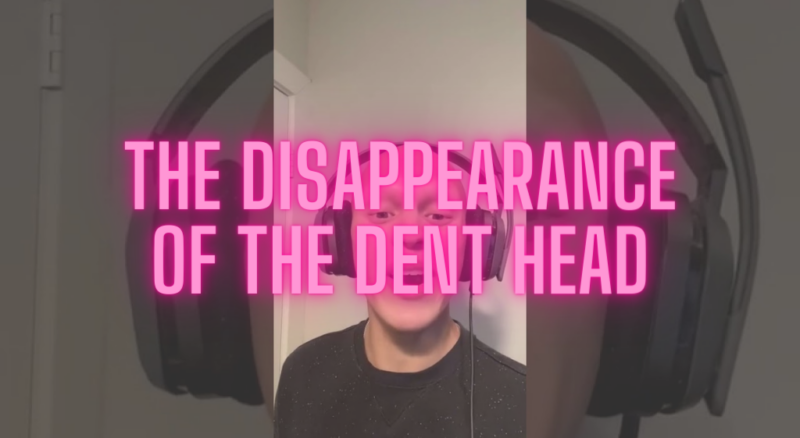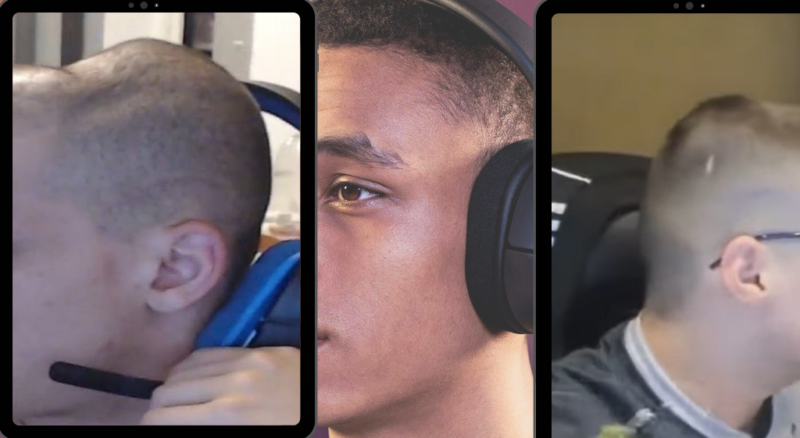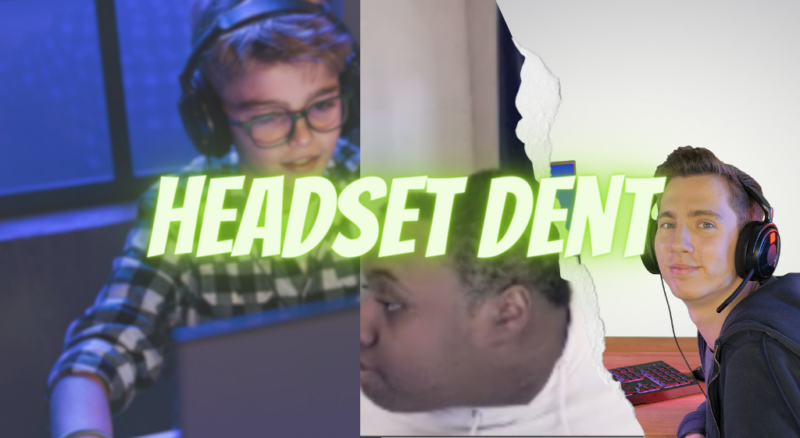Most individuals who use headphones or headsets frequently have experienced the infamous ‘headset dent,’ a noticeable indentation in the hair immediately following a prolonged period of wearing a headset.
This has sparked a common question: Do headset dents go away? The answer, while straightforward, necessitates a deeper understanding of the hair’s biological structure, how headsets interact with it, and how to prevent or minimize the effect.
Hair Biology 101

Before diving into the phenomenon of headset dents, it’s crucial to comprehend the basics of hair biology. Hair, although dead in its visible parts, has a complex structure. It originates from a follicle located in the dermis, the inner layer of the skin, with cells rapidly dividing at the base to form new hair.
Hair is made of a protein called keratin, which is also found in our nails and the outer layer of our skin. Keratin proteins are arranged in a pattern to form the three primary structures of hair: the medulla (core), cortex (middle layer), and cuticle (outer layer).
The cortex, with its keratin-filled cells, is responsible for the hair’s tensile strength, elasticity, and shape. It’s this particular part of the hair structure that allows it to bend, stretch, and, most importantly for our purposes, form a dent when under pressure.
The Mechanics of Headset Dents

Headset dents, in essence, are an expression of your hair’s malleability. When you wear a headset, you apply a steady pressure to your hair. This pressure forces the hair to conform to the shape of the headset band, creating a noticeable indentation once the headset is removed. This is very similar to the dents or waves that can be induced by hair bands, braids, or even hats.
It’s important to note that the likelihood and intensity of a headset dent can be influenced by factors like the tightness of the headset, the duration of use, the texture of your hair, and its moisture content at the time of wearing the headset.
The Disappearance of the Dent

So, do these dents go away? The short answer is: yes.
The formation of a headset dent is a temporary deformation, not a permanent change. It’s akin to folding a soft piece of wire – it bends readily, but once the pressure is removed, the wire will spring back to its original shape over time. Similarly, the keratin structure in our hair allows it to rebound to its original form.
The time it takes for the dent to disappear can vary widely based on several factors. Hair type, ambient humidity, the amount of natural oil in the hair, and the time since the last wash can all affect how quickly the hair returns to its normal shape.
In general, however, headset dents will start to fade after a few hours and should be completely gone within a day. If the dent is particularly stubborn, washing and drying the hair will typically reset the hair to its original shape.
Mitigating the Headset Dent Phenomenon

Despite the temporary nature of headset dents, they can be a nuisance, particularly for individuals concerned about their appearance immediately following headset use. Thankfully, several strategies can be employed to reduce the intensity or frequency of headset dents.
- Adjust the Fit: One of the most effective ways to prevent headset dents is to ensure your headset fits properly. A headset that is too tight will apply more pressure to the hair, resulting in a more noticeable dent. If your headset is adjustable, experiment with looser settings to see if this helps.
- Change the Headset Design: Consider using in-ear headphones or headsets that use a different type of band. Certain designs distribute the pressure more evenly or apply it in a less noticeable area.
- Hair Hydration: Hydrated hair tends to be more flexible and resilient. Using hydrating hair products may help minimize the appearance of dents.
- Regular Breaks: Taking regular breaks from your headset can give your hair time to rebound between sessions. This could be particularly helpful during long periods of headset use.
FAQs
Is it possible to permanently dent your hair from consistently wearing a headset?
No, it is not possible to permanently dent your hair by wearing a headset. The “dent” is a temporary deformation that occurs due to the pressure exerted by the headset. Once the pressure is removed, the hair will gradually return to its original shape, thanks to the elastic properties of the hair proteins.
Do headset dents occur more frequently in specific hair types?
Yes, the frequency and intensity of headset dents can vary with different hair types. People with softer, finer hair or particularly straight hair might notice headset dents more often as these hair types may conform more readily to the shape of the headset. However, it’s a phenomenon that can affect anyone, regardless of their hair type.
I have curly hair. Can I still get a headset dent?
Yes, even individuals with curly hair can get a headset dent. Though the curl structure might provide some resistance, prolonged pressure from the headset can still cause a noticeable indentation.
Can I get a headset dent from wearing in-ear headphones or earbuds?
Generally, in-ear headphones or earbuds do not cause headset dents as they don’t apply pressure across the top of your head. However, prolonged use can still cause discomfort or potentially affect your ear canal, so taking regular breaks is recommended.
What’s the quickest way to get rid of a headset dent?
Washing and drying your hair will typically reset it to its original shape fastest. However, if this isn’t feasible, wetting the affected area and blow-drying it while brushing can also be effective.
Is there a way to pad the headband of my headset to prevent dents?
Yes, adding padding to the headband of your headset can help distribute the pressure more evenly, reducing the likelihood of dents. You can use foam or a soft cloth to create DIY padding. However, keep in mind that adding padding may affect the headset’s fit and comfort.
Conclusion

While headset dents can be a minor annoyance, they are a harmless and temporary side effect of wearing a headset. They do go away naturally, typically within a few hours to a day, thanks to the resilient structure of our hair.
For those who find them bothersome, understanding the mechanics of headset dents can lead to effective strategies for prevention, from adjusting the headset fit to taking regular breaks. Remember, headset dents are merely a testament to your hair’s flexibility, not a permanent mark.






